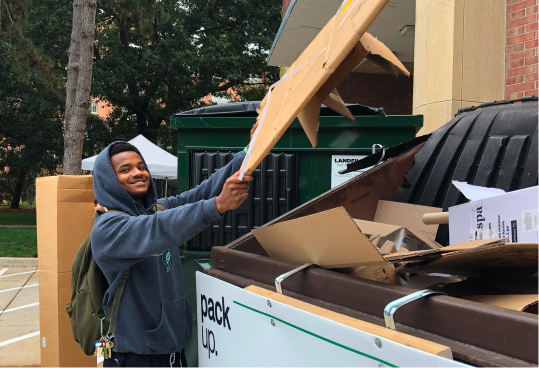LEED Buildings
In 2009, MSU received its first Leadership in Energy and Environmental Design (LEED) award, earning a silver certification for the construction of an addition to the Chemistry Building. On campus, numerous other buildings have earned LEED certification, and all new construction and major renovation projects follow LEED standards. These guidelines include reuse of materials, recycling on construction waste and more.
South Campus Anaerobic Digester
Completed in 2013, the South Campus Anaerobic Digester is a sealed tank, deprived of oxygen, which intakes organic waste and converts it into usable fuel when heated. Taking waste from places like the MSU Dairy Teaching and Research Center and campus dining halls, the digester diverts about 17,000 tons of organic waste every year. It generates enough energy to power 10 buildings on South Campus, the equivalent of powering between 250 and 300 homes.
Solar Carports
MSU’s commitment to renewable energy takes shape in the solar carports that span across five parking lots on the southern end of campus. The solar carports, operational since December of 2017, are designed to deliver an annual energy of 15 million kilowatt-hours to the university and operate on a peak power of 10.5 Megawatts. This energy is equivalent to powering 1,800 Michigan homes. The carports were built to accommodate both snow plowing and vehicles for tailgating. To learn more about solar energy and the power purchase agreement for it, visit MSU Infrastructure and Planning Facilities.
Solar Tables
Located in the South Campus Courtyard, the solar-powered picnic table provides students, faculty, staff and visitors with a unique studying space outside. With features like a solar roof and charging outlets, the table balances enjoying the outdoors with accessibility for meeting, studying and working. Proposed and executed by the Sustainable Spartans, an MSU student group, the project is also an example of student collaboration and innovation.
